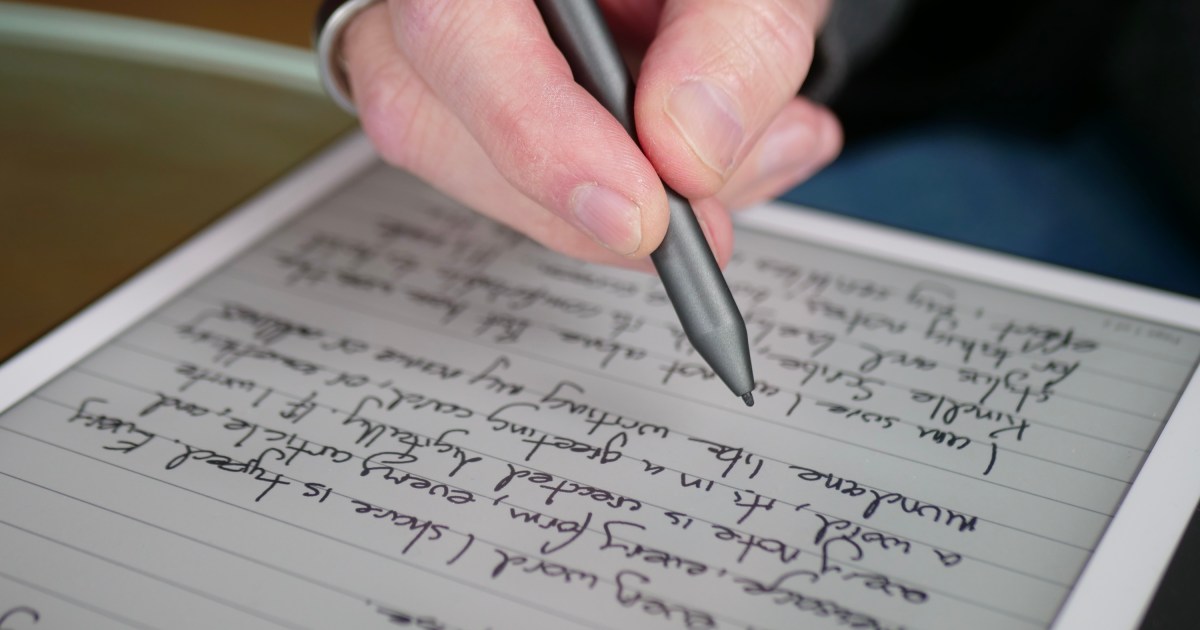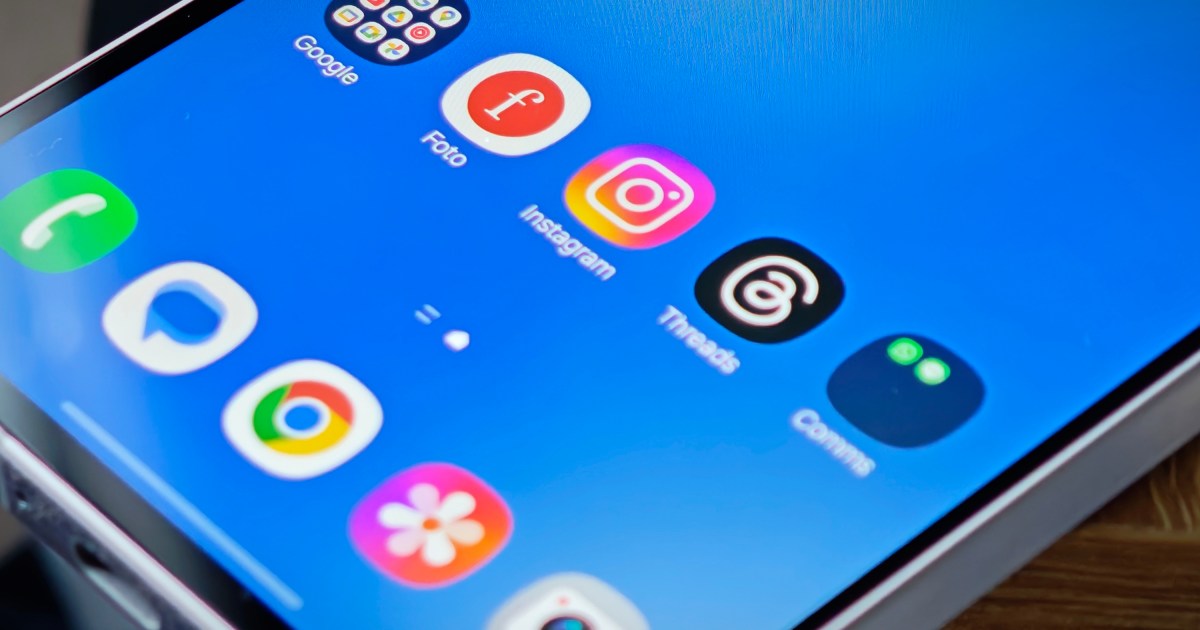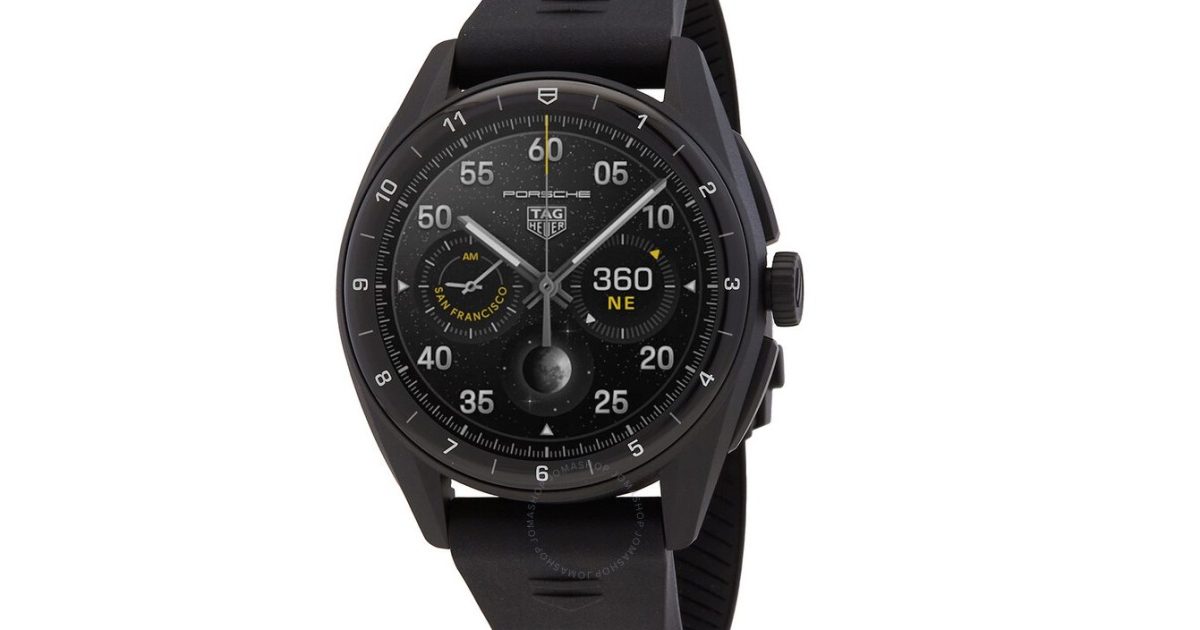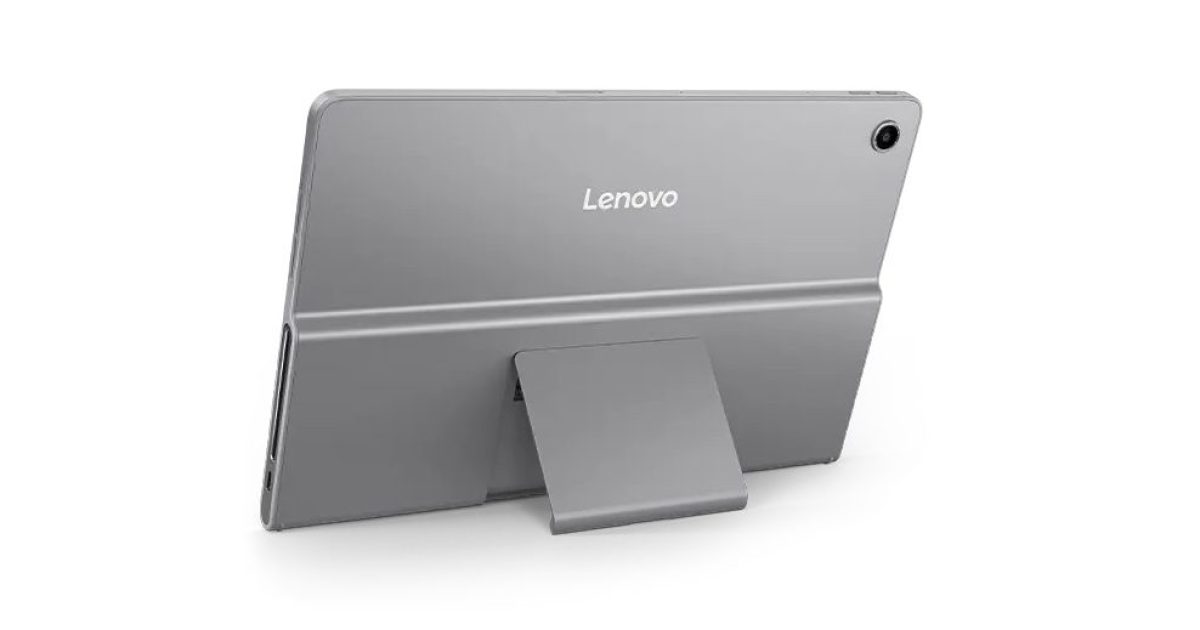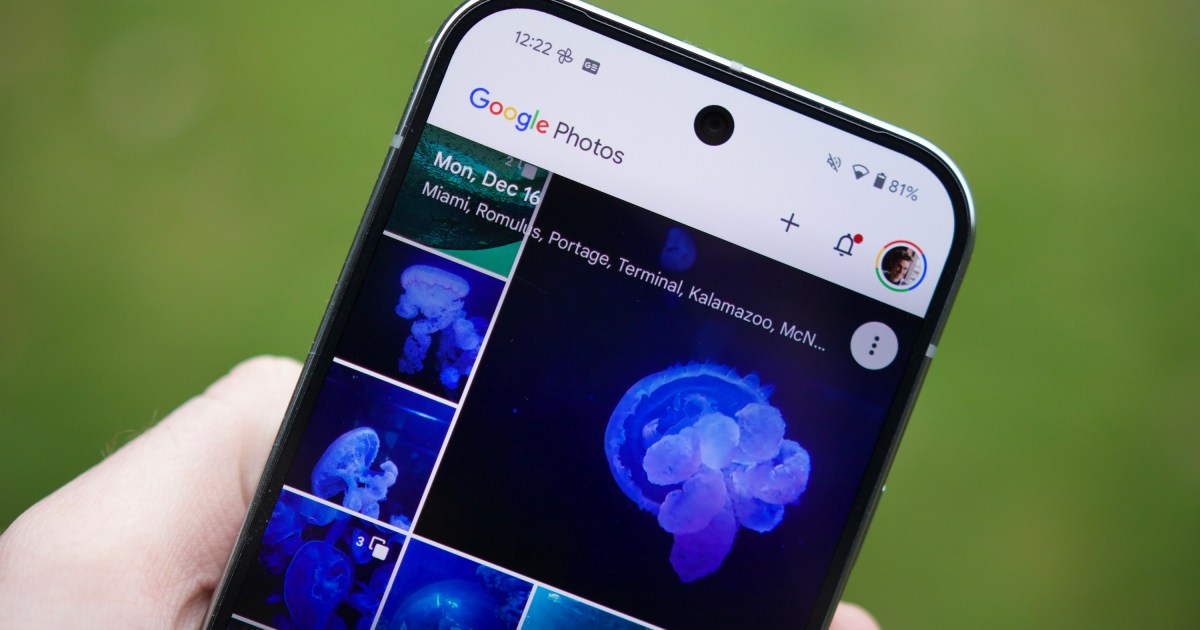The allure of a larger e-reader screen drew me to the Amazon Kindle Scribe and its impressive 10.2-inch e-paper display. While the experience wasn’t what I initially anticipated, using the stylus for note-taking revealed a personal truth: my handwriting had significantly deteriorated in the digital age. This realization, however, sparked a renewed interest in putting pen to, well, digital paper.
The Decline of Handwriting in a Digital World
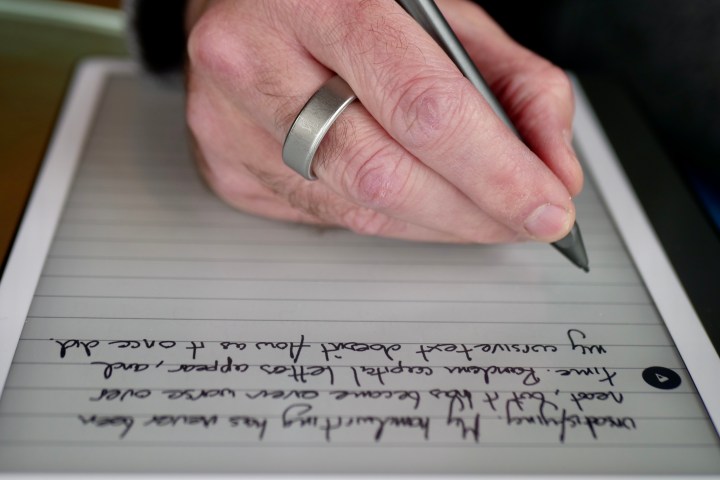 A person using the Amazon Kindle Scribe and its stylus. (Andy Boxall / MaagX)
A person using the Amazon Kindle Scribe and its stylus. (Andy Boxall / MaagX)
For years, nearly all my communication, from messages and forms to articles and notes, has been typed. Handwriting is reserved for greeting cards or mundane tasks like signing my name. Even then, my cursive has devolved into a barely legible scrawl, often replaced by block capitals for speed and clarity. This experience isn’t unique. A friend, an avid note-taker who avoids digital note-taking, confessed to a similar hybrid of capitals and cursive to maintain legibility. It seems the art of handwriting is evolving alongside our increasingly digital language.
 The Amazon Kindle Scribe (Andy Boxall / MaagX)
The Amazon Kindle Scribe (Andy Boxall / MaagX)
The first two sections of this article were written on the Scribe. Long-form writing felt remarkably natural. Resting my hand on the screen posed no issues, and the stylus’s responsiveness, while not instantaneous, proved adequate and non-distracting. The eraser tool and various templates further enhanced the experience. After completing the initial paragraphs, the Scribe’s excellent share feature converted my handwriting to text and emailed it flawlessly, suggesting either impressive handwriting recognition or a less dire state of my handwriting than I’d imagined.
The Scribe: A Note-Taker’s Dream
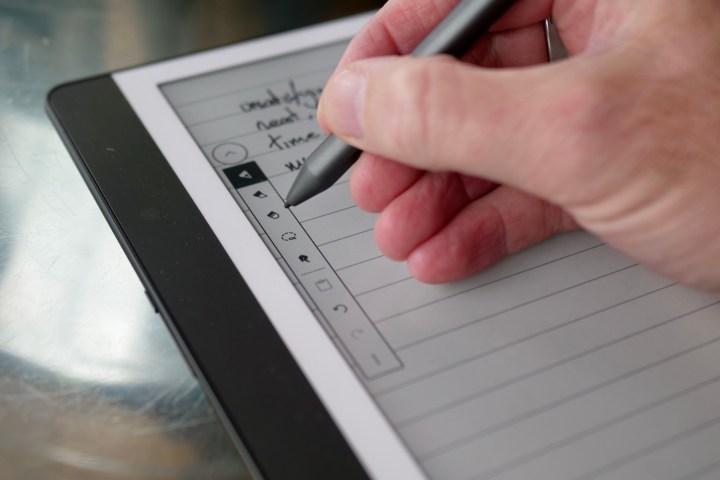 A person using the Amazon Kindle Scribe and its stylus. (Andy Boxall / MaagX)
A person using the Amazon Kindle Scribe and its stylus. (Andy Boxall / MaagX)
The Scribe’s stylus and writing experience reignited my enjoyment of writing. The prospect of carrying the Scribe and jotting down ideas, instead of relying on my iPhone’s Notes app, became appealing. The Scribe’s size and screen facilitated longer writing sessions, offering a more immersive experience.
Beyond personal writing, the Scribe excels as a note-taking device. Various templates, margin scribbling, dedicated note panels, highlighting, and in-line note-taking cater to diverse needs. While not features I regularly utilize, their seamless integration and ease of use are commendable. Furthermore, the Scribe’s portability compared to tablets like the iPad, combined with the included stylus (avoiding the extra cost of an Apple Pencil), adds to its appeal. However, its size still presents a challenge for everyday carry, unlike my smaller iPad Pro.
Reading on the Scribe: A Mixed Bag
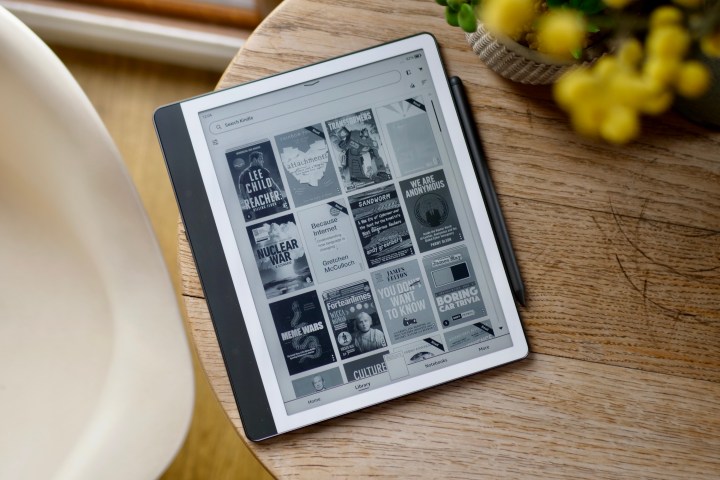 The Amazon Kindle Scribe (Andy Boxall / MaagX)
The Amazon Kindle Scribe (Andy Boxall / MaagX)
My initial interest in the Scribe stemmed from a desire for a larger e-reader screen. While note-taking is a key selling point, the Scribe remains tied to Amazon’s bookstore, functioning as a larger Kindle. After a month of reading, I’m returning to my 7-inch Kindle Paperwhite.
Despite seemingly identical processors and RAM, the Scribe’s reading experience feels less responsive. Page turns, menu navigation, and overall responsiveness lag behind the Paperwhite, likely optimized for note-taking over reading. The larger screen, while initially appealing, contributes to this slower navigation.
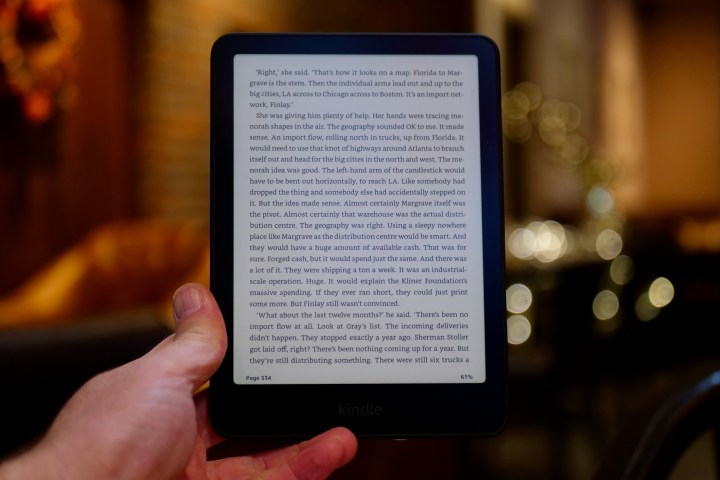 A person holding the Amazon Kindle Paperwhite 2024, showing a book on screen. (Andy Boxall / MaagX)
A person holding the Amazon Kindle Paperwhite 2024, showing a book on screen. (Andy Boxall / MaagX)
The Scribe’s size also affects the reading experience. The Paperwhite’s compact form and soft-touch case provide a more comfortable and tactile experience. These seemingly minor details become significant during immersive reading sessions. While the Scribe’s reading experience isn’t inherently bad, it lacks the Paperwhite’s immersive quality.
The Price of the Scribe
 The back of the Amazon Kindle Scribe. (Andy Boxall / MaagX)
The back of the Amazon Kindle Scribe. (Andy Boxall / MaagX)
The Scribe’s price is a considerable factor. At twice the cost of the Paperwhite Signature Edition, the Scribe’s value proposition becomes questionable. A traditional notepad, a quality pen, and the Paperwhite Signature Edition offer a significantly cheaper alternative for both reading and writing.
Conclusion: A Writing Tool, Not the Ultimate E-reader
The Kindle Scribe reignited my love for writing and offers impressive note-taking capabilities. While it integrates seamlessly with Amazon’s bookstore, its reading experience falls short of the Paperwhite. Its size and price further limit its appeal as an all-in-one e-reader. For dedicated note-takers prioritizing writing over reading, the Scribe holds potential, particularly during sales. However, for avid readers seeking a larger screen, the Scribe may not be the ideal solution.



